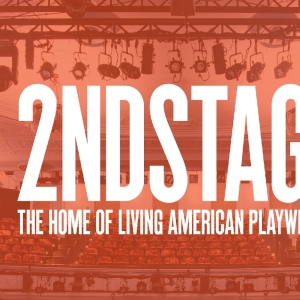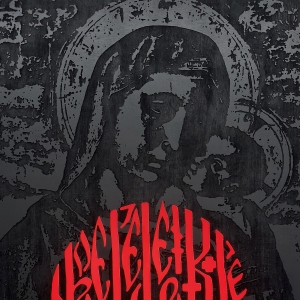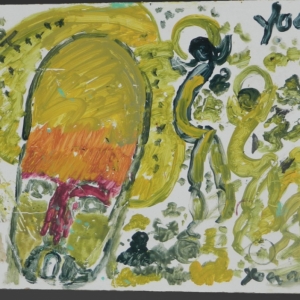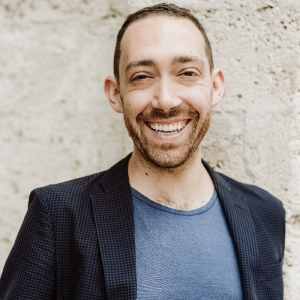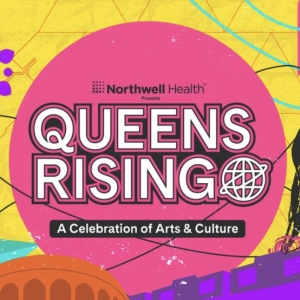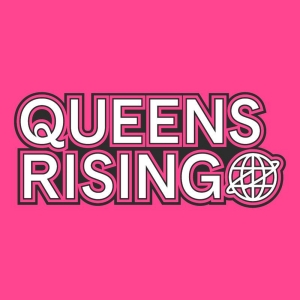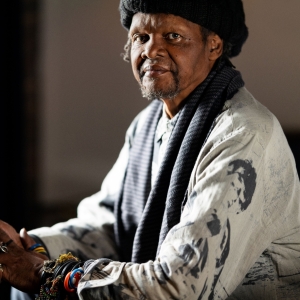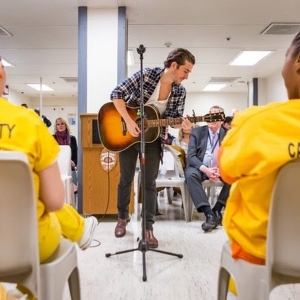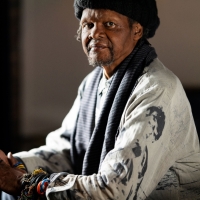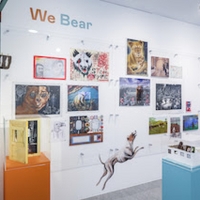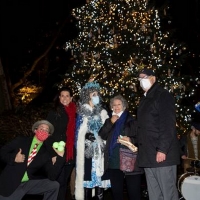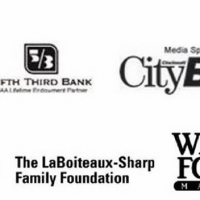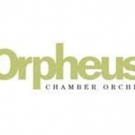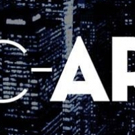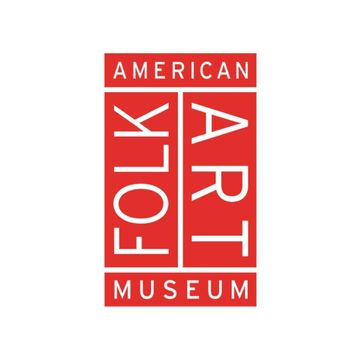
At a Glance
Time Needed: 60 min.
Ages: All
Allows Food/Drink: No
Luggage Storage: No
2 Lincoln Square, New York, NY 10023 Get Directions
American Folk Art Museum Videos
November 5, 2025 Made from natural sources and transformed through a range of artisanal and industrial processes, quilts carry deep geographical and cultural histories. Artist and scholar Lauren Bartone traces the social, economic, and cultural histories of plants and trees, transforming them into both material and subject in her hand-dyed linen compositions inspired by landscapes and still-life traditions. Composed of photography interwoven with fiber and other natural threads, Mallory Lowe Mpoka’s sculptures evoke a state of in-betweenness and interconnection across multiple times and spaces, drawing on her experiences in Africa, Europe, and North America. Grounded in a practice of drawing and craft, artist and curator Swapnaa Tamhane collaborates with India-based artisans to deconstruct textile design processes and interrogate their colonial frameworks and genealogies. Introduced and moderated by curator Julia Eilers Smith, this program invites the artists to share their practices and explore the ways they creatively engage with fibers, dyes, and patterns. Speakers will reflect on the textiles, botanical illustrations, raw fibers, and dye samples on view in the exhibition An Ecology of Quilts: The Natural History of American Textiles, while tracing the intertwined histories of craftsmanship, botany, and globalisation. About the speakers Lauren Bartone’s hand dyed and sewn linen compositions intentionally play on conventions from landscape and still life painting, as well as textile history. This work is the product of material experimentation in the studio, alongside archival research about botanics, color, and the development of national identities. Her use of dyes with historical cultural significance, like cochineal, fustic, or indigo, is a reflection of her interdisciplinary approach and curiosity about the complex and sometimes contradictory ways meaning is created through imagery. Mallory Lowe Mpoka (b.1996, lives and works in Montreal) enfolds photography into an expanded sensual experience to address notions of place, home and memorialization. Positioned by the violence of colonization that inflicts historical and cultural rupture on identity, the artist engages in a multi-faceted and fluid practice to explore the often elusive connections between real and imagined histories. Supplementing the materiality of the photograph with weaving, ceramics, dyeing and sculptural augmentation, Mpoka reanimates and resituates her family archives. Her work expresses a nomadic x through her incorporation of multiple time periods and spatial connections, inspired by her journeys between different continents – Africa, Europe and North. Swapnaa Tamhane’s art practice is dedicated to drawing, making handmade paper, and working with the material histories of cotton and jute, while her curatorial interests explore feminist histories in India. Julia Eilers Smith is a curator, researcher, and writer based in Tio’tia:ke / Mooniyang / Montreal. Since 2019, she has served as Curator of Research at the Leonard & Bina Ellen Art Gallery, Concordia University.
September 30, 2025 An Ecology of Quilts: The Natural History of American Textiles traces the relationship between the environment and traditional quilting practices through a selection of quilts from the Museum’s rich collection, dating from the 18th to the 20th centuries. The show’s co-curators—AFAM’s Deputy Director and Chief Curatorial & Program Officer, Emelie Gevalt and the Museum’s Art Bridges Fellow, Austin Losada—will lead a walkthrough of the galleries in dialogue with one another. Together, the speakers will highlight selected quilts and accompanying materials on view—including watercolors, historical illustrations, swatch books, raw fibers, dye stuff samples, and instructional video—while exploring the botanical knowledge and industrial techniques involved in producing textile materials, colors, and patterns. With a focus on the environmental impact of quiltmaking, this walkthrough is a unique opportunity to learn about the many facets of global material culture that emerged in the early modern period and profoundly shaped the United States in the 18th, 19th and 20th centuries. - About the speakers Emelie Gevalt is Deputy Director and Chief Curatorial & Program Officer at the American Folk Art Museum in New York City. Her exhibitions at AFAM include the critically acclaimed What that Quilt Knows About Me (2023) and Unnamed Figures: Black Presence and Absence in the Early American North (2023). Gevalt received her B.A. in art history and theater studies from Yale University, her M.A. from the Winterthur Program in American Material Culture, and her doctorate in art history from the University of Delaware. Her two decades of art-world experience include positions at the Museum of Fine Arts, Boston and Christie’s, New York, where she was a Vice President in the Estates, Appraisals & Valuations department. Austin Losada is Art Bridges Fellow working within the Curatorial and Collections & Exhibitions teams at the American Folk Art Museum in New York City. He is a scholar and curator of American art and material culture with a specialty in the history of photography from its invention to the present day. Losada earned his M.A. in Material Culture Studies from the Winterthur Program in American Material Culture at the University of Delaware and a B.A. in Art History and German from Rutgers University. He previously served as the Andrew W. Mellon Post-Graduate Intern at the Zimmerli Art Museum where he curated several exhibitions, including “Beauty Among the Ordinary Things”: The Photographs of William Armbruster.
May 20, 2025 “This wool painting is of a big farm. On the farm, there is an angel and a little bird. I don't know why, but an angel appeared there, above the bulls, right by the sun. The farmhouse is really old, and all these people live on the farm. There was also a big green bird that appeared there by the sun. I love the sun and the moon, all two of them” –Madalena Santos Reinbolt, c. 1974-1975 This story of an old farm, where a great bird a little bird and an angel appear beside the sun, reveals the rich and intricate imagination of Madalena Santos Reinbolt. Through her quadros de lã (wool paintings) and her oil paintings, the artist not only shapes forms, patterns, and colors but also expresses her surroundings, emotions as, and beliefs. Her work is deeply inspired by her community, spiritual traditions, and environment. Siu Vásquez and Hellen Ascoli, two contemporary weavers from Colombia and Guatemala, also use the materiality of textiles, their pigments and symbols to address issues of memory, language, and ancestral knowledge. In conversation with Anna Burckhardt Pérez—a curator interested in the intersections of art, craft, technology, and ecologies in Latin America—these two contemporary artists will discuss their textile-based practices in Spanish and English. Using Santos Reinbolt’s embroideries as a starting point, the speakers will reflect on how textiles expand the possibilities of representation while exploring the deep connections between artistic innovation, local craft techniques, and identity. This program is co-organized by Anna Burckhardt Pérez, Neville Bryan Assistant Curator at the Art Institute of Chicago, and Mathilde Walker-Billaud, Curator of Programs and Engagement at the American Folk Art Museum. About the speakers Hellen Ascoli (Guatemala City / Baltimore, MD) is a weaver; a word that encompasses the other areas of discourse she situates herself within: art, craft, education and translation. Ascoli has a MFA from SAIC and her work has been exhibited internationally. In 2023 her solo exhibition, “CIEN TIERRAS” at the Contemporary Art Center in Cincinnati, traveled to La Nueva Fábrica in Antigua, Guatemala. Notably her work was shown at Museo del Barrio Trienal 2024, and the Sharjah Biennial 2025. She has taught at universities in Guatemala and the US, and currently teaches at MICA while developing her practice in Language Justice. Currently she is working on an upcoming solo exhibition at the International Studio Curatorial Program, Brooklyn NY where she was previously a Pollock-Krasner resident. Siu Vásquez (Bucaramanga, Columbia) conceives her work as an expanded form of painting through which she reflects on the land and its relationships. She experiments with the materiality of pigments, supports, and references that might otherwise go unnoticed to create a personal pictorial language. She creates pigments with stones, bark, and plants from her home region, combining artisanal practices and working with artisans from rural and Indigenous cultures. Vásquez studied Fine Arts at the Universidad Nacional de Colombia. Her work has been exhibited in Colombia, Chile, the UK, Albania, Italy, and Spain. It is part of the collection of the Banco de la República de Colombia, the Museo de Arte Moderno de Bucaramanga, and private collections. Her most recent solo exhibition, "La cabra siempre tira al monte," was presented in 2023 at SGR Galería, Bogotá, Co. Her work was recently exhibited at the ARTBO 2024 International Art Fair; "Sembrar la duda: Indicios sobre las representaciones indígenas en Colombia" at MAMU 2023; the 1st Santiago de Chile Textile Art Biennial in 2023; "Fiesta de la primavera" at MAVI-UC; the "Organizmo Bloom" residency in the Matavén rainforest in 2022 and London in 2023, as part of the British Council International Collaboration Grant. and "Cmd" at the MAXXI in Rome, in 2018. Anna Burckhardt Pérez (Bogotá, Colombia) is a curator and writer interested in the intersections of contemporary art, craft, technology, community-based practices, and ecologies in Latin America. She is currently the Neville Bryan Assistant Curator at the Art Institute of Chicago (AIC). Prior to joining AIC, she worked at the Museum of Modern Art in New York, where she curated and co-organized several exhibitions and programs, most recently, Projects: Carolina Caycedo and David de Rozas (2022). Recent projects as an independent curator include Threads to the South (2024) at the Institute for Studies on Latin American Art (ISLAA), New York, and Mutualismos (2021) at Plural Nodo Cultural, in Bogotá.
20 de mayo de 2025 “Esta pintura de lana representa una gran granja. En ella, hay un ángel y un pajarito. No sé por qué, pero un ángel apareció allí, sobre los toros, justo al lado del sol. La casa es muy antigua, y toda esta gente vive en ella. También había un gran pájaro verde que apareció allí junto al sol. Me encantan el sol y la luna, los dos juntos.” –Madalena Santos Reinbolt, c. 1974-1975 Esta historia de una antigua granja, donde un gran pájaro, un pajarito y un ángel aparecen junto al sol, revela la rica e intrincada imaginación de Madalena Santos Reinbolt. A través de sus quadros de lã (pinturas de lana) y sus óleos, la artista no solo modela formas, patrones y colores, sino que también expresa su entorno, emociones y creencias. Su obra está profundamente inspirada por su comunidad, sus tradiciones espirituales y su entorno. Siu Vásquez y Hellen Ascoli, dos tejedoras contemporáneas de Colombia y Guatemala, también utilizan la materialidad de los textiles, sus pigmentos y símbolos para abordar cuestiones de memoria, lenguaje y conocimiento ancestral. En conversación con Anna Burckhardt Pérez, curadora interesada en las intersecciones del arte, la artesanía, la tecnología y la ecología en Latinoamérica, estas dos artistas contemporáneas hablarán sobre sus prácticas textiles en español e inglés. Tomando como punto de partida los bordados de Santos Reinbolt, las ponentes reflexionarán sobre cómo los textiles amplían las posibilidades de representación, explorando a la vez las profundas conexiones entre la innovación artística, las técnicas artesanales locales y la identidad. Este programa está coorganizado por Anna Burckhardt Pérez, curadora adjunta Neville Bryan del Instituto de Arte de Chicago, y Mathilde Walker-Billaud, curadora de Programas y Participación del Museo de Arte Popular Americano. Sobre los ponentes Hellen Ascoli (Ciudad de Guatemala / Baltimore, MD) es tejedora; un término que abarca las otras áreas del discurso en las que se desenvuelve: arte, artesanía, educación y traducción. Ascoli cuenta con una maestría en Bellas Artes (MFA) del SAIC y su obra se ha exhibido internacionalmente. En 2023, su exposición individual, “CIEN TIERRAS”, en el Centro de Arte Contemporáneo de Cincinnati, viajó a La Nueva Fábrica en Antigua, Guatemala. Cabe destacar que su obra se exhibió en la Trienal del Museo del Barrio 2024 y en la Bienal de Sharjah 2025. Ha impartido docencia en universidades de Guatemala y Estados Unidos, y actualmente imparte clases en MICA, donde desarrolla su práctica en Justicia Lingüística. Actualmente, trabaja en una próxima exposición individual en el International Studio Curatorial Program de Brooklyn, Nueva York, donde anteriormente fue residente de Pollock-Krasner. Siu Vásquez (Bucaramanga, Colombia) concibe su obra como una forma expandida de pintura a través de la cual reflexiona sobre la tierra y sus relaciones. Experimenta con la materialidad de pigmentos, soportes y referencias que de otro modo pasarían desapercibidas para crear un lenguaje pictórico personal. Crea pigmentos con piedras, cortezas y plantas de su región natal, combinando prácticas artesanales y trabajando con artesanos de culturas rurales e indígenas. Vásquez estudió Bellas Artes en la Universidad Nacional de Colombia. Su trabajo ha sido expuesto en Colombia, Chile, Reino Unido, Albania, Italia y España. Forma parte de la colección del Banco de la República de Colombia, del Museo de Arte Moderno de Bucaramanga y de colecciones privadas. Su exposición individual más reciente, “La cabra siempre tira al monte”, fue presentada en 2023 en SGR Galería, Bogotá, Co. Su obra fue expuesta recientemente en la Feria Internacional de Arte ARTBO 2024; "Sembrar la duda: Indicios sobre las representaciones indígenas en Colombia" en MAMU 2023; la 1ª Bienal de Arte Textil de Santiago de Chile en 2023; "Fiesta de la primavera" en MAVI-UC; la residencia “Organizmo Bloom” en la selva de Matavén en 2022 y en Londres en 2023, como parte de la Beca de Colaboración Internacional del British Council. y "Cmd" en el MAXXI de Roma, en 2018. Anna Burckhardt Pérez (Bogotá, Colombia) es curadora y escritora, interesada en las intersecciones del arte contemporáneo, la artesanía, la tecnología, las prácticas comunitarias y las ecologías en Latinoamérica. Actualmente es curadora adjunta Neville Bryan en el Instituto de Arte de Chicago (AIC). Antes de unirse al AIC, trabajó en el Museo de Arte Moderno de Nueva York, donde curó y coorganizó varias exposiciones y programas, el más reciente de los cuales fue Proyectos: Carolina Caycedo y David de Rozas (2022). Entre sus proyectos recientes como curadora independiente se incluyen Hilos al Sur (2024) en el Instituto de Estudios de Arte Latinoamericano (ISLAA) de Nueva York, y Mutualismos (2021) en Plural Nodo Cultural de Bogotá.
13 de abril de 2025 Faço no pensamento. Já vejo até com o olho fechado. Eu penso aquilo, se for para alinhavar, eu vou alinhavando, e vou costurando por cima tudo o que está na minha cabeça. As agulhas, elas é que desenha. – Madalena Santos Reinbolt, c. 1974–1975 “Já vejo até com o olho fechado – Seminário virtual sobre a vida e a arte de Madalena Santos Reinbolt”, um dia de palestras e apresentações realizadas em inglês e português, é o primeiro programa de grande escala explorando a vida, arte, influências e processos criativos de Madalena Santos Reinbolt (Vitória da Conquista, Brasil, 1912–1976, Petrópolis, Brasil). Organizado como programa especial em conjunto com a exposição "Madalena Santos Reinbolt: uma cabeça cheia de planetas", a primeira retrospectiva do trabalho da artista – primeiro em exibição no Museu de Arte de São Paulo Assis Chateaubriand em 2022, e atualmente no American Folk Art Museum), “Já vejo até com o olho fechado” apresenta novas pesquisas sobre esta figura negligenciada mas importante na cena artística brasileira do século XX. O seminário virtual reúne importantes acadêmicos, curadores e artistas do Brasil e dos EUA para explorar temas relacionados aos modernismos, artes latino-americanas, têxteis, artesanato e práticas autodidatas, como também à diáspora negra. Oferece uma oportunidade rara para o público situar o processo artístico de Santos Reinbolt em um contexto histórico, geográfico, de gênero, racial e socioeconômico mais amplo, enquanto examina a extensão da prática e visão singular da artista. Este seminário é organizado por Mathilde Walker-Billaud, Curadora de Programas Públicos do AFAM Programação 11:00 - 11:30 ET Madalena Santos Reinbolt no American Folk Art Museum em Nova York Introdução por Valérie Rousseau, PhD, Diretora Curatorial e Curadora Sênior de Arte do Século XX e Contemporânea, AFAM, e Mathilde Walker-Billaud, Curadora de Programas Públicos. 11:30 - 13:30 ET Madalena Santos Reinbolt: já não um segredo público? Painel e conversa com: Amanda Carneiro & André Mesquita, co-curadores de "Madalena Santos Reinbolt: uma cabeça cheia de planetas" apresentada no MASP, de 25 de novembro de 2022 a 26 de fevereiro de 2023 Amanda Reis Tavares Pereira, pesquisadora de arte Mariana Arantes, pesquisadora de arte Apresentado e moderado por Dylan Blau Edelstein, Doutorando do Departamento de Espanhol e Português da Universidade de Princeton e Assistente Curatorial da exposição "Madalena Santos Reinbolt: uma cabeça cheia de planetas" do AFAM 14:00 - 15:15 ET Adornando os fios: Madalena Santos Reinbolt e as tradições têxteis afro-diaspóricas Conversa com Kesiena Onosigho, artista e Julia Bryan-Wilson, Professora de Arte LGBTQ+ na Universidade de Columbia e Curadora-Geral no MASP 15:15 - 16:30 ET Madalena Santos Reinbolt: a arte como forma de saturação e tempo anacrônico Considerações finais por Lilia Moritz Schwarcz, Professora Titular em Antropologia na Universidade de São Paulo e Professora Visitante na Universidade de Princeton. Créditos “Já vejo até com o olho fechado – Seminário virtual sobre a vida e a arte de Madalena Santos Reinbolt” é co-apresentado com o Museu de Arte de São Paulo Assis Chateaubriand e o Brazil LAB da Universidade de Princeton. O Museu de Arte de São Paulo Assis Chateaubriand - MASP, o primeiro museu moderno do Brasil, é uma instituição privada e sem fins lucrativos, fundada em 1947 pelo empresário brasileiro Assis Chateaubriand. Seu edifício, projetado por Lina Bo Bardi, é um marco da arquitetura do século XX. Este ano, o MASP está se expandindo, transformando-se em um complexo cultural com a mais importante coleção de arte europeia do Hemisfério Sul. Seu programa curatorial é diverso, inclusivo e plural, celebrando a história da arte. O Brazil LAB é uma iniciativa original do Princeton Institute for International and Regional Studies, reunindo professores e estudantes de Princeton que trabalham no Brasil, sobre o Brasil, e em áreas de estudo para as quais o Brasil é uma referência importante. O LAB | Estudos Luso-Afro-Brasileiros | é um centro multidisciplinar de pesquisa e ensino para explorar a história, política e cultura do país, bem como sua importância regional e conexões internacionais. Apoio O apoio principal para este programa é oferecido pela Dorothea and Leo Rabkin Foundation. Apoio adicional provém de The Coby Foundation, o Comitê Consultivo Madalena Santos Reinbolt (Vilma Eid, Luciana Solano, Maria Fernanda Mazzuco), o Consulado-Geral do Brasil em Nova York / Instituto Guimarães Rosa, Citi, a Dorothea and Leo Rabkin Foundation, e o New York City Department of Cultural Affairs em parceria com o City Council, o New York State Council on the Arts com o apoio do Office of the Governor e da New York State Legislature, e o David Davies and Jack Weeden Fund for Exhibitions.
April 13, 2025 I work everything out in my head. I can see it all even with my eyes closed. I think of something, and if it has to be tacked then I start tacking, and then on top of that I stitch all the things that I have in my head. Really, it’s the needles that are doing the drawing. – Madalena Santos Reinbolt, c. 1974–1975 I Can See It All Even With My Eyes Closed–A Virtual Seminar on the Life and Art of Madalena Santos Reinbolt, a day of talks and presentations held in both English and Portuguese, is the first large-scale program exploring the life, art, influences, and creative processes of Madalena Santos Reinbolt (Vitória da Conquista, Brazil, 1912–1976, Petrópolis, Brazil). Organized in conjunction with the exhibition "Madalena Santos Reinbolt: A Head Full of Planets", the first retrospective of the artist's work–first on view at the Museu de Arte de São Paulo Assis Chateaubriand in 2022, and currently at the American Folk Art Museum), I Can See It All Even With My Eyes Closed will present new research on this overlooked but important figure of twentieth-century Brazilian art. The virtual seminar will bring together leading scholars, curators, and artists from Brazil and the US to explore modernisms, Latin American arts, textiles, craft, self-taught practices, and the Black diaspora. It will offer a rare opportunity for the audience to situate Santos Reinbolt’s artistic process in a broader historical, geographical, gendered, racial, and socio-economic context while examining the extent of the artist’s practice and singular vision. This seminar is organized by Mathilde Walker-Billaud, AFAM Curator of Programs and Engagement Schedule 11:00 AM - 11:30 AM ET Madalena Santos Reinbolt at the American Folk Art Museum in New York Introduction by Valérie Rousseau, PhD Curatorial Chair and Senior Curator of 20th-Century & Contemporary Art, AFAM and Mathilde Walker-Billaud, Curator of Programs and Engagement. 11:30 AM - 1:30 PM ET Madalena Santos Reinbolt: A Public Secret No More? Panel presentation and conversation featuring: Amanda Carneiro & André Mesquita, co-curators of "Madalena Santos Reinbolt: A Head Full of Planets" presented at MASP, from November 25, 2022 to February 26, 2023 Amanda Reis Tavares Pereira, art scholar Mariana Arantes, art scholar Introduced and moderated by Dylan Blau Edelstein, PhD Candidate, Princeton University's Spanish and Portuguese Department, and Curatorial Assistant of AFAM’s "Madalena Santos Reinbolt: A Head Full of Planets" 2:00 PM - 3:15 PM ET Embellishing the Threads: Madalena Santos Reinbolt and Afro-Diasporic Textile Traditions Conversation with Kesiena Onosigho, artist and Julia Bryan-Wilson, Professor of LGBTQ+ Art at Columbia and Curator-at-Large at MASP 3:15 PM - 4:30 PM ET Madalena Santos Reinbolt: Art As a Form of Saturation and Anachronistic Time Closing remarks by Lilia Moritz Schwarcz, Full Professor in Anthropology at the University of São Paulo and Visiting Professor at Princeton University.Schedule Credits I Can See It All Even With My Eyes Closed–A Virtual Seminar on the Life and Art of Madalena Santos Reinbolt is co-presented with the Museu de Arte de São Paulo Assis Chateaubriand and Brazil LAB at Princeton University. The Museu de Arte de São Paulo Assis Chateaubriand - MASP, the first modern museum in Brazil, is a private, non-profit institution founded in 1947 by Brazilian businessman Assis Chateaubriand. Its building, designed by Lina Bo Bardi, is a landmark of 20th-century architecture. This year, MASP is expanding, transforming into a cultural complex with the most important collection of European art in the Southern Hemisphere. Its curatorial program is diverse, inclusive, and plural, celebrating the history of art. The Brazil LAB is an original initiative at the Princeton Institute for International and Regional Studies, gathering Princeton faculty and students working in and on Brazil and on subjects Brazil is helpful to think with. The LAB | Luso-Afro-Brazilian Studies | is a multi-disciplinary research and teaching hub for exploring the country’s history, politics and culture, along with its regional significance and international connections. Support Lead Support for this program is provided by Dorothea and Leo Rabkin Foundation. Additional support is provided by The Coby Foundation, the Madalena Santos Reinbolt Advisory Committee (Vilma Eid, Luciana Solano, Maria Fernanda Mazzuco), the Consulate-General of Brazil in New York / Instituto Guimarães Rosa, Citi, the Dorothea and Leo Rabkin Foundation, and the New York City Department of Cultural Affairs in partnership with the City Council, the New York State Council on the Arts with the support of the Office of the Governor and the New York State Legislature, and the David Davies and Jack Weeden Fund for Exhibitions.
More in The Upper West Side
More Museums
- The Tenement Museum
- New Museum
- International Center of Photography
- Museum at Eldridge Street
- National Museum of the American Indian
- National September 11 Memorial & Museum
- The Rubin Museum of Art
- Whitney Museum of American Art
- The Morgan Library & Museum
- Museum of Modern Art (MoMA)
American Folk Art Museum Frequently Asked Questions
The closest subway stops to the American Folk Art Museum at 2 Lincoln Square in New York City are:
1. 66th Street – Lincoln Center Station: This station is served by the 1 train and is located just a short walk from the museum. Exit the station and head west on West 66th Street towards Broadway. The museum will be on your left.
2. 72nd Street Station: This station is served by the 1, 2, and 3 trains. From the station, you can walk south on Broadway until you reach West 66th Street. Turn right and the museum will be on your left.
I would recommend checking the MTA website for any subway updates or changes in service before your visit. You can find the most up-to-date information on their website: MTA.info.
While you're in the area, you might also want to explore the vibrant Lincoln Square neighborhood. Lincoln Center for the Performing Arts is just a stone's throw away, and it's home to some of the world's most renowned performing arts organizations. If you're interested in catching a show, be sure to check out their schedule and see if anything catches your eye.
Additionally, Central Park is within walking distance, so you could take a leisurely stroll through the park before or after your visit to the museum. It's a beautiful oasis in the heart of the city and offers a variety of activities and attractions.
Enjoy your visit to the American Folk Art Museum and have a wonderful time exploring the surrounding area!
The closest bus stops to the American Folk Art Museum at 2 Lincoln Square in New York City are:
1. Broadway/W 65 St - served by the M5, M7, M11, and M104 buses. You can check for updates on these bus routes on the MTA Bus Time website.
2. Columbus Circle - served by various bus routes including the M5, M7, M10, M20, M31, M57, and M104. For real-time bus updates, you can visit the MTA Bus Time website.
Please note that bus routes and schedules are subject to change, so it's always a good idea to check for updates before your visit. Safe travels and enjoy your time at the American Folk Art Museum!
The ideal length of time to plan for a visit to the American Folk Art Museum in New York City can vary depending on your level of interest in folk art and your schedule. However, I would recommend setting aside at least 1 to 2 hours to fully explore the museum and appreciate its unique collection.
The American Folk Art Museum showcases a diverse range of self-taught art, including paintings, sculptures, textiles, and decorative objects. With its thought-provoking exhibitions, it's worth taking the time to immerse yourself in the stories and creativity behind these works.
During your visit, you can also take advantage of the museum's educational programs, guided tours, or special events, which may require additional time. Additionally, don't forget to browse the museum shop, where you can find one-of-a-kind folk art-inspired items to take home as souvenirs.
Remember, this is just a general recommendation, and if you have a particular interest in folk art or want to explore the museum at a leisurely pace, you may want to allocate more time. Ultimately, the choice is yours, and I'm sure you'll have a wonderful time exploring the American Folk Art Museum!
The American Folk Art Museum in New York City does not have a designated food or drink policy. However, it is always best to be respectful of the artwork and the museum environment. While you may not be able to bring food or drinks into the galleries, there are usually designated areas such as cafes or outdoor spaces where you can enjoy refreshments. Additionally, there are plenty of restaurants and cafes in the surrounding area where you can grab a bite to eat before or after your visit.
The American Folk Art Museum in New York City does not have a luggage storage facility on-site. However, there are several options available nearby where you can securely store your belongings while you visit the museum.
One option is to use a luggage storage service such as Vertoe or LuggageHero. These services provide convenient and secure storage locations throughout the city, including near the American Folk Art Museum. You can easily find and book a storage spot through their websites or mobile apps.
Another option is to check if your hotel offers luggage storage for its guests. Many hotels provide this service even if you are not currently staying with them. It's worth contacting your hotel in advance to inquire about their policy.
Lastly, if you are traveling with a larger suitcase or bag, you may want to consider using a luggage storage service at one of the major transportation hubs in the city, such as Penn Station or Grand Central Terminal. These facilities are typically equipped to handle larger items and offer secure storage options.
Remember to plan ahead and check the operating hours and fees of any luggage storage service you choose, as they may vary. This will ensure a smooth and hassle-free visit to the American Folk Art Museum.
Yes, the American Folk Art Museum in New York City is definitely worth a visit for visitors from other countries, as well as non-English language speakers. While English is the primary language used in the museum, the exhibits primarily focus on visual art, which can be appreciated and understood by people of all languages.
The museum showcases a diverse collection of traditional and contemporary folk art, including paintings, sculptures, textiles, and more. The artwork often tells stories and reflects cultural traditions, making it accessible and engaging for visitors of all backgrounds.
Additionally, the museum provides informative labels and descriptions alongside the artwork, which can be helpful for non-English speakers. Furthermore, the museum offers audio guides in multiple languages, allowing visitors to learn more about the exhibits in their preferred language.
Overall, the American Folk Art Museum offers a unique and enriching experience for all visitors, regardless of their language proficiency. It is a wonderful opportunity to explore the rich cultural heritage of folk art and gain a deeper understanding of American history and traditions.
The American Folk Art Museum in New York City is a wonderful destination for visitors of all ages. While there is no specific age range recommended, the museum's exhibits and collections are generally suitable for older children, teenagers, and adults. Younger children may also enjoy the colorful and imaginative artwork on display, but may not fully appreciate the historical and cultural significance of the pieces. Ultimately, it depends on the interests and attention span of your child. The museum offers a variety of programs and activities throughout the year that may cater to different age groups, so be sure to check their website for any upcoming events that might be of interest to your family.
Videos


